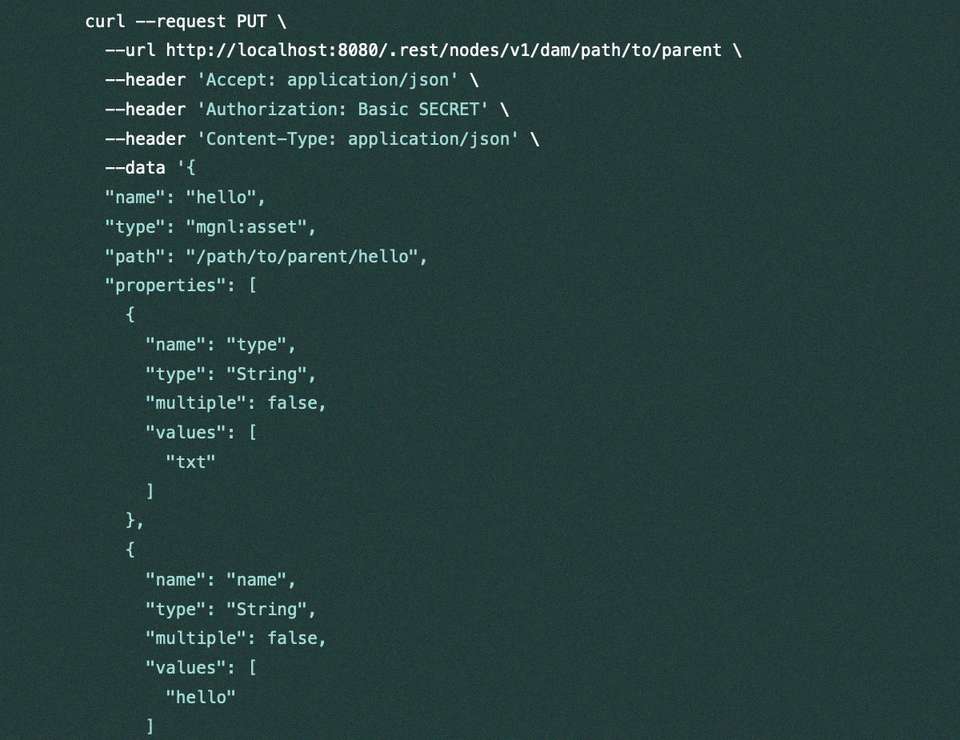This is an example on how to create an asset in Magnolia CMS DAM workspace. To create an asset, two requests are necessary:
- First Request: Create asset node with type
mgnl:asset - Second Request: Create a subnode with type
mgnl:resource
Create Asset
The request contains the node with minimum three properties: type, name and title.
curl --request PUT \
--url http://localhost:8080/.rest/nodes/v1/dam/path/to/parent \
--header 'Accept: application/json' \
--header 'Authorization: Basic SECRET' \
--header 'Content-Type: application/json' \
--data '{
"name": "hello",
"type": "mgnl:asset",
"path": "/path/to/parent/hello",
"properties": [
{
"name": "type",
"type": "String",
"multiple": false,
"values": [
"txt"
]
},
{
"name": "name",
"type": "String",
"multiple": false,
"values": [
"hello"
]
},
{
"name": "title",
"type": "String",
"multiple": false,
"values": [
"Hello Worlds TXT"
]
}
]
}'
Create Resource for Asset
The second request contains the subnode with five properties: jcr:data (binary in base64 format), extension, fileName, jcr:mimeType and size (in bytes). Now, the node should already be present in the Assets app.
The Magnolia CMS 5.7 documentation does not mention that the size is necessary, bu the size is important otherwise the asset will not work. The documentation for Magnolia CMS 6 has the size in the request example.
To find the size of a file the command stat can be used, e.g.: stat --printf="%s" hello.txt or on macOS stat -f%z hello.txt.
curl --request PUT \
--url http://localhost:8080/.rest/nodes/v1/dam/path/to/parent/hello \
--header 'Accept: application/json' \
--header 'Authorization: Basic SECRET' \
--header 'Content-Type: application/json' \
--data '{
"name": "jcr:content",
"type": "mgnl:resource",
"path": "/path/to/parent/hello/jcr:content",
"properties": [
{
"name": "jcr:data",
"type": "Binary",
"multiple": false,
"values": [
"SGVsbG8sIFdvcmxkcyE="
]
},
{
"name": "extension",
"type": "String",
"multiple": false,
"values": [
"txt"
]
},
{
"name": "fileName",
"type": "String",
"multiple": false,
"values": [
"hello.txt"
]
},
{
"name": "jcr:mimeType",
"type": "String",
"multiple": false,
"values": [
"plain/text"
]
},
{
"name": "size",
"type": "Long",
"multiple": false,
"values": [
14
]
}
]
}'
Now the resource with the binary data is created and the asset should work.
